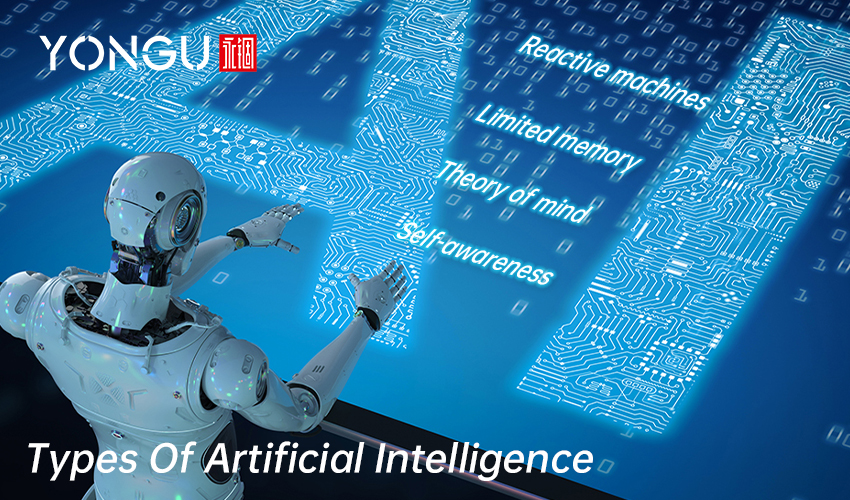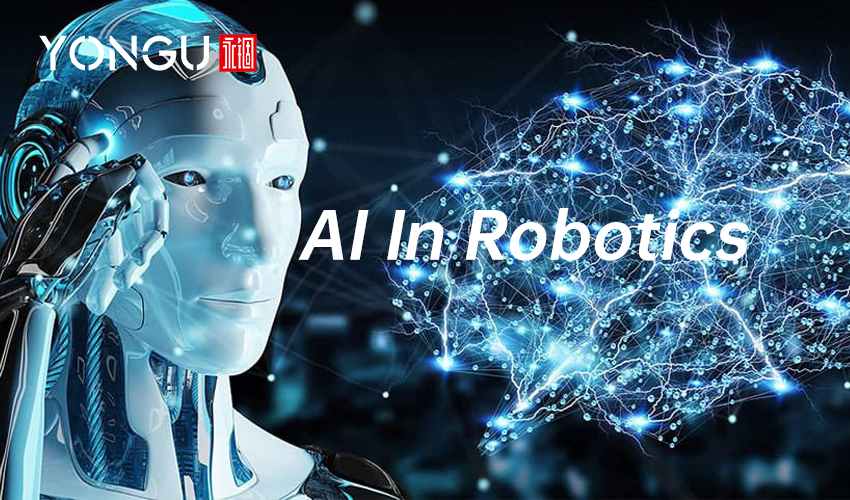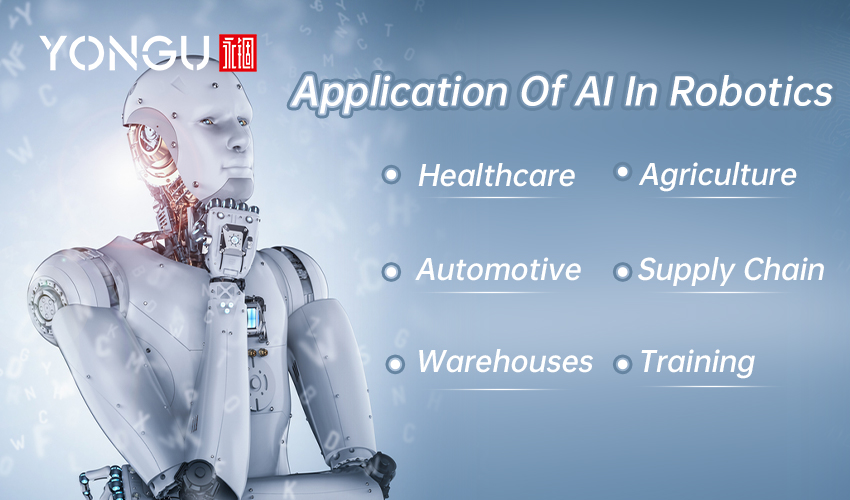What Is Artificial Intelligence?
Artificial intelligence (AI) is a term used to characterize machines that have been taught to think and act like humans. Any device with human-like features, such as the aptitude to engage in the learning process and problem-solving features, falls under artificial intelligence.How Does AI Work?
AI systems learn from the trends and characteristics in the data they examine by integrating big data sets with intelligence and iterative processing methods. This allows the systems to discover new information. An AI system must evaluate and analyze its performance each time it processes data for improvement.Cognitive abilities, including learning, reasoning, and self-correction, are fundamental to AI development.
Learning Processes
Programming in this area of AI is all about obtaining data and generating rules for how to use that data. Algorithms are rules that tell computers precisely what to do to accomplish a particular task.
Reasoning Processes
In this facet of AI programming, the emphasis is placed on selecting the appropriate algorithm to get the anticipated result.
Self-Correction
AI programming relies heavily on the development and improvement of algorithms to get the most accurate outcomes possible.
Importance of Artificial Intelligence
Artificial intelligence is essential to achieve the desired objectives in business because it may give firms heavily redacted insights into their operations and because it can occasionally surpass individuals in particular tasks. Artificial intelligence systems are beneficial for repetitive, error-prone processes like checking many legal papers to ensure all necessary fields are filled in correctly.Artificial intelligence technology has various essential advantages that make it an ideal tool for almost any modern firm, such as automation, development, analytics, accuracy and return on investment. By boosting the speed and accuracy of strategic decision-making processes, AI helps firms improve their critical business operations.
Types Of Artificial Intelligence
According to Michigan State University associate professor Arend Hintze, AI may be classified into four types, starting with task-specific intelligent systems that are now in use and advancing to sentient AI, which has yet to be developed. The following are the categories::- Reactive machines
These strategies increase AI systems' gameplay, but they can't be simply adjusted or used elsewhere. These programmed imaginations can't function beyond their allotted jobs and are easily deceived.
Deep Blue is IBM's chess-playing supercomputer.
- Limited memory
This is already being done by self-driving automobiles. For instance, they keep an eye on the speed and direction of other vehicles.
- Theory of mind
- Self-awareness

Applications of Artificial Intelligence
There are several applications for artificial intelligence. This technology can help a wide range of companies and areas. Health care providers are looking at using it to give patients drugs and other treatments and carry out surgical procedures.Artificially intelligent devices that can do tasks like playing chess or driving are just a few of the many possibilities. Every action taken by any of these devices will affect the outcome.
Self-driving automobiles must consider all metadata and evaluate it to prevent an accident.
Banks' fraud departments benefit significantly from using artificial intelligence in the financial sector to highlight abnormal debit card usage and high account deposits, all of which may be detected and flagged by artificial intelligence. Trading may be streamlined and made simpler with the use of AI applications. To achieve this, securities' supply, demand, and pricing are made easier to estimate.
AI In Robotics
People's first introduction to the concept of automated type machines was in the form of robots. There was once a period when robots were built to complete particular duties; sure, such machines were first developed without artificial intelligence to conduct repetitive activities.But things are different now; artificial intelligence is being included in robots to build a more sophisticated level of robotics capable of performing various jobs, as well as learning new things and having a better understanding of the surrounding world.
Artificial intelligence (AI) in robotics enables robots to carry out critical jobs with a vision comparable to that of a human and can detect or distinguish a variety of things. In today's world, the training of robots is done through machine learning.

For robots to be able to see a wide variety of objects and carry out the appropriate actions appropriately with accurate outcomes, a massive quantity of datasets is utilized during the training process of the computer vision model. In addition, the performance of robots is continuously increasing as a direct result of higher-quality and more accurate processes of machine learning.
How is AI Used in Robotics?
Not only does artificial intelligence (AI) in robotics assist in learning the model to accomplish particular jobs, but it also makes robots more intelligent so that they can behave in a variety of contexts.
Robots may perform a wide range of functions, including computer vision, motion control, the capacity to grasp objects, and the processing of training data to identify patterns in concrete and administrative variables and respond correctly. Using machine learning approaches, training sets are used to train the AI model to understand the situations and discriminate among several items. Annotating images is critical in this case because it allows robots to detect and grasp a wide variety of objects and carry out the necessary action correctly, which is essential to the success of AI in robotics.
Sensors in Robotics
The sensor's presence aids the robots' capacity to recognize visuals of their environment in their systems. Combinations of multiple sensors are utilized in robots in the same way that human beings use five primary senses.There are a variety of sensors that allow robots to adapt to changing and uncontrolled situations and use AI.
Following are the few standard sensors used in robots but robotics artificial intelligence is not limited to them.
- Photo Sensors
- Temperature Sensors
- Transceivers
- Humidity Sensors
- Piezoelectric Sensor
- Electromagnetic Sensors
Machine Learning in Robotics
It is possible to train an AI model such that it is capable of performing a variety of tasks utilizing machine learning. Data collection is used on a big scale to feed the ML algorithms and ensure that AI models like robots can execute properly. The model's accuracy will be maximized to the fullest extent possible due to the extensive utilization of training data.Object recognition and grasping/holding capabilities, as well as mobility from one area to another, are all part of robotic training. In most cases, machine learning is used to identify a wide range of items that may be seen in various forms and sizes in multiple situations.
While this process is in progress, if robots continue to discover new items, they may soon create a whole new category for detecting these things.
Although machine learning may be used to educate a robot, several distinct methods exist. For more accurate machine learning, deep knowledge is also utilized for training these models with high-quality training data.
Application Of AI In Robotics
- Healthcare
- Supply Chain
- Agriculture
- Automotive
- Warehouses
- Training
Today, the expansion of the robotics sector owes a sizeable amount of debt to the development of aluminum beginning in the middle of the 20th century and going onward. This debt was incurred because aluminum was used in a substantial quantity of robotics. Aluminum's strength, durability, lifetime, mobility, and flexibility have allowed the field of robotics to advance to where it is now. Without aluminum's properties, robotics would not be where it is today.
In addition to being used in numerous robotic components, aluminum is critical in the automated manufacturing process. Aluminum can provide solutions where other materials cannot, such as small, machined components, enormous, mechanized machinery, and even the robots used to manufacture them.
YONGU's aluminum enclosures enable manufacturers and designers to get the most out of the goods and projects they are working on by maximizing their potential.
YONGU Plastic Panel Cover Aluminum Enclosure K04A 110*30mm
It has 28 crash-proof K series models, including the following specifications.
- K01A-K05A, full plastic protected plastic covers.
- K01B-K05B, half-protected plastic covers with aluminum end panels.
- K06-K10, half-protected plastic end covers.
- K11-K23, wall mounted flange and can use the sticker instead of the printing.
Structure & Key Features
- Good Extruded aluminum housing and ABS-protected covers.
- Excellent Shielding Attributes
- Dimensions, hole drilling, surface treatment, printing, etc., can be customized.
- Rugged and robust for heavy-duty use.
- Dustproof, Durable and can be used for a long time.
- Conductivity is achievable using contacts between unfinished inner surfaces.
For further information and customized product of your requirements, please follow our FACEBOOK for more updates and informations: https://www.facebook.com/Foshan-Gof-Electronic-Machine-Co-Ltd-104706631749290
You can also contact us at +86 13326782625 or write us [email protected].




